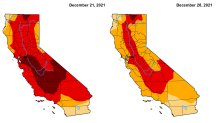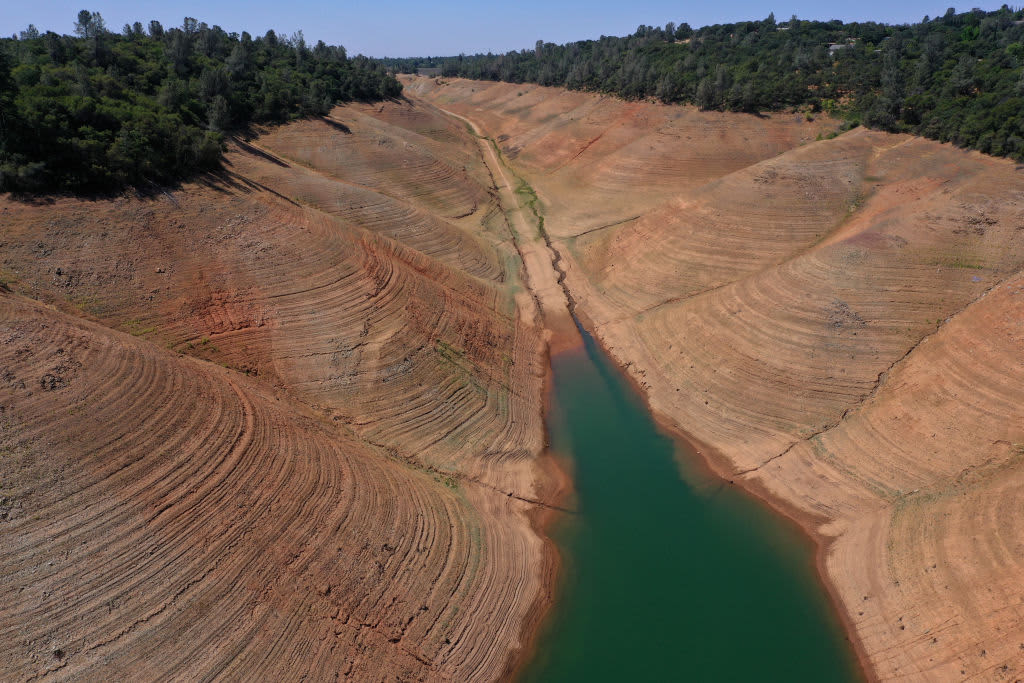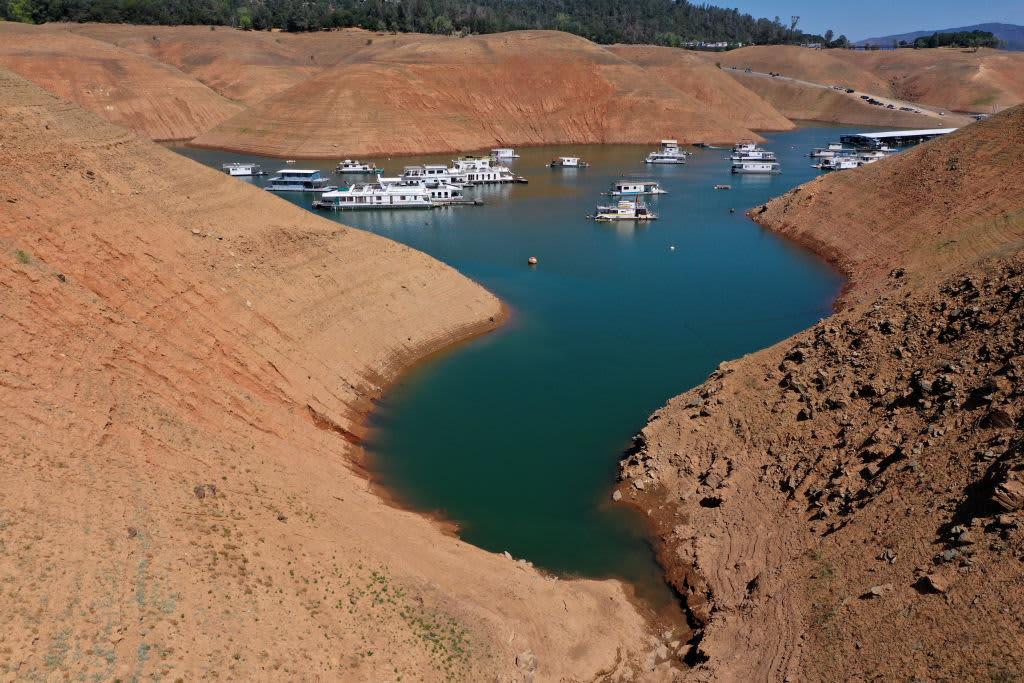A series of early winter storms that brought days of rain and snow to California helped improve conditions in the drought-stricken state.
All of California remains is some level of drought this week, but conditions improved significantly in the two most severe categories.
The weekly report released Thursday shows exceptional drought was nearly erased after 23 percent of the state was under the most severe category one week ago. Nearly 33 percent of the state is in extreme drought, down from 79 percent last week.
Three months ago, that figure was at 88 percent.
Get top local stories in Southern California delivered to you every morning. Sign up for NBC LA's News Headlines newsletter.

The storms fueled by a band of moisture over the Pacific began the week of Christmas and continued to usher in rain and mountain snow this week. The report was updated early Dec. 28, so it does not factor in all precipitation received this week.
"A persistent pattern over the North Pacific and western North America maintained a continuation of frequent storms affecting the West Coast through late December," the Drought Monitor statement said. "Seven-day precipitation from December 21-27 exceeded 2 inches, liquid equivalent, across much of California along with western portions of Oregon and Washington.

During the past two weeks, precipitation has averaged 150 to 300 percent of normal or more throughout nearly all of California, the report stated.
"This wet pattern during mid to late December has also been accompanied by below normal temperatures (-2 to -6 degrees F) across California and the Pacific Northwest."
The Central Sierra snow lab has observed 193.7 inches of snowfall this month, which is a December record, topping the previous record of 179 inches set in 1970.
California's mountain snow holds 160% of the water it normally does this time of year, state water officials announced Thursday.
"Given the favorable snowpack and heavy precipitation during December, additional improvements may be warranted for California during subsequent weeks," the Drought Monitor report said.
Photos: December Storm Images From Around California
Droughts are common in California, where dry spells are often followed by wet winters that replenish the state's critical snowpack and water reservoirs. And it takes more than a lot of rain and snow in one shot to ease drought conditions.
The state is “definitely not out of the woods quite yet," said Sean de Guzman, manager of the snow surveys and water supply forecasting for the California Department of Water Resources.
Prolonged hot and dry conditions over moths and years means water evaporates at a faster rate from reservoirs and the Sierra Nevada snowpack that feeds them. The snowpack usually melts in spring or early summer, then that water flows into the state’s vast storage and distribution system.
About a third of California's water supply comes from snow as it melts and flows down from the Sierra Nevada and the Shasta-Trinity mountain range in northern California.
California has more than 500 reservoirs, which were 50% lower than they should be at the start of June. These photos show the dramatic impact of the current dry spell at California’s lakes and reservoirs.
California's Mediterranean-style climate means the summers are always dry and the winters are not always wet. The state's reservoirs act as a savings account, storing water in the wet years to help the state survive during the dry ones.
Last year was the third driest on record in terms of precipitation.
Drought is generally defined as a period of drier-than-normal conditions resulting in water-related problems. That period can be days, weeks, months and years.
The term can have different meanings, depending on how water users are affected by water deficiencies. In a state of 40 million people, that's a lot of water users impacted in different ways by dry spells.
Droughts have been classified into the following:
- Meteorological drought means a lack of precipitation.
- Agricultural drought describes a lack of soil moisture.
- Hydrologic drought indicates reduced streamflow or groundwater levels.
California recently went through a five-year event from 2012-2016. Other notable historical droughts included 2007-09, 1987-92, 1976-77, and off-and-on dry spells of more than a decade in the 1920s and 1930s.



